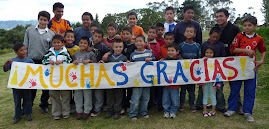 |
| Esteban Zambrano working on his bike in July 2011. Six months later, we still hadn't discovered the real problem with this bicycle.... |
One bike had been in the shop for months because the coaster brake wasn't braking or accelerating properly. This yellow BMX style bike, which belonged to my son, Keegan, when he was young, is now assigned to Esteban Zambrano. So, in early February, Esteban and I replaced the old coaster hub with a new one. He happily rode off to try it out, but we both were puzzled when he started having problems before he even passed through the big doors of the shop. This time, though, I could see that the problem wasn't with the coaster brake hub. The pedals were moving - but the chain wasn't moving nearly as much. Hmmm.
So, we pulled apart the one-piece (Ashtabula type) crank and bottom bracket, looking to tighten up the chain ring. We tightened it as much as possible, and then Esteban gave the bike another test drive. He made it out the door, but going up the hill behind the shop, the disconnect between the chain ring and the crank returned. I was tired, it was late at that point, and we just parked the bike and went to dinner, feeling frustrated.
 |
| We took the bottom bracket apart several times |
Next day, I compared Esteban's bike with another of similar (Ashtabula type) one piece crank - and finally discovered that one important component was missing on Esteban's bike. The missing part was a stub bolt from the drive side pedal crank that passes through a hole in the chain ring. This bolt had apparently broken off, because there was an uneven surface left on the pedal crank. In the days before, I didn't even notice this problem....
So, I got busy with the arc welder and in a short time fashioned a new stub bolt to secure the chain ring in its position.
 |
| New stub bolt welded onto the pedal crank to secure the chain ring on Esteban Zambrano's bike, shown in the background. |
Subsequently, I did take apart the coaster brake hub that we had replaced on Esteban's bike - and found that it had a cracked brake shoe assembly. I suspect that the resulting impaired braking action may have caused the operator (Esteban or his predecessor) to exert undo force to get the bike to stop, therefore overstressing the stub bolt and causing its failure.






